Art & Exhibitions
Chagall’s Sketches for His First Stained-Glass Window in the U.S. Make a Rare Showing
A new exhibition delves into the creative process behind Chagall's stained-glass work for Union Church.
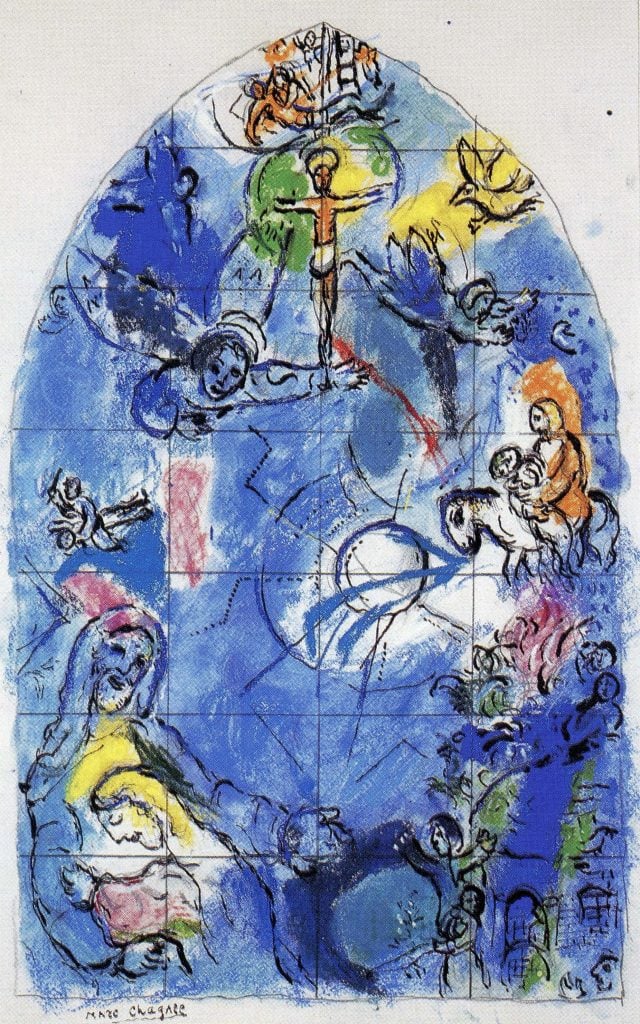
The Union Church of Pocantico Hills in Westchester County, New York, may appear a modest country church, but inside its unassuming stone walls lies something extraordinary—Marc Chagall’s very first stained-glass window in the U.S.
The work was commissioned following the death of oil magnate John D. Rockefeller Jr. in 1960, when his children decided a memorial was due him in their family church, located close to the Rockefellers’ Kykuit estate. For decades, the Union Church had benefitted from the clan’s largesse, including a $10,000 donation toward its first building. It already housed a rose window designed by Henri Matisse, commissioned by Rockefeller in 1948 in honor of his late wife, Abby.
To commemorate their father, the Rockefeller kids tapped another artist from the French school, Marc Chagall, hot off a retrospective at the Museum of Modern Art, where his famed Jerusalem Windows were shown. For Union Church, Chagall created an intricate, jewel-toned piece after the biblical tale of the Good Samaritan to mirror Rockefeller’s philanthropic efforts. He would go on to design eight more windows for the congregation. Today, the Union Church is the only one in the country to feature Chagall’s stained-glass work.
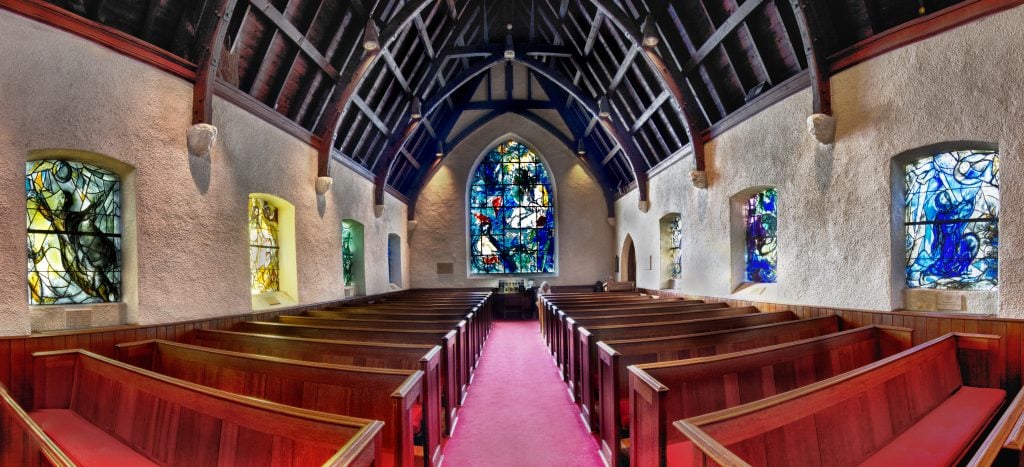
Union Church windows by Marc Chagall, showing the Good Samaritan behind the altar and Hebrew prophets on the side. Photo: © J Matorano for Historic Hudson Valley.
This fall, the David Rockefeller Creative Arts Center is revisiting Chagall’s historic contribution to the church. The Pocantico institution’s “Sketching Light” will bring together 27 preparatory studies that Chagall made for the stained-glass pieces. These works on paper provide a rare view into the artist’s creative process, said Katrina London, the center’s curator.
“Chagall’s sketches give us fleeting insights into the mind of one of the most renowned 20th-century modernists,” she said in a statement, “rendering his work at once extraordinary and familiar.”
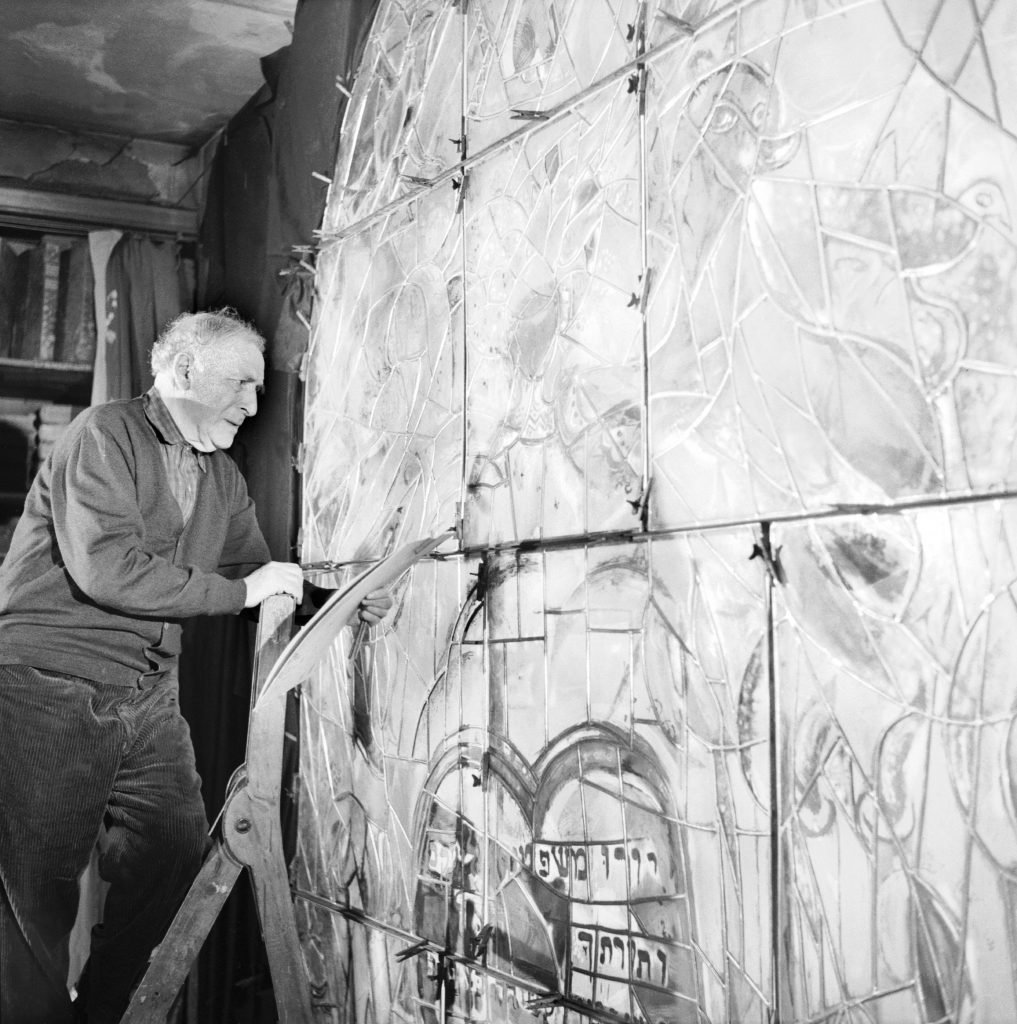
Marc Chagall working on stained-glass windows in the Jacques Simon studios in Reims, 1961. Photo: Keystone-France/Gamma-Keystone via Getty Images.
When Chagall embarked on the Union Church project, his stained-glass works were growing in demand after he unveiled his series of 12 monumental windows for what is now known as the Abbell Synagogue. The Metz Cathedral had come calling, as had the Chichester Cathedral in the U.K. These commissions arrived as the artist was rounding off his long-running “Bible” series, begun in the 1930s, which saw him reinterpret the Old Testament in a set of striking figurative illustrations.
Unveiled in 1962, his large Good Samaritan window is a narrative work in which the entirety of the parable can be read—from the act of violence that besets a traveler to his rescue by a kind stranger. Chagall’s preparatory sketches show how he began the work as a pencil and ink sketch, before adding color and texture with paint and mixed media. These maquettes helped him picture how sunlight would activate the glass work.
“For me,” Chagall once reflected, “a stained-glass window is a transparent partition between my heart and the heart of the world.”
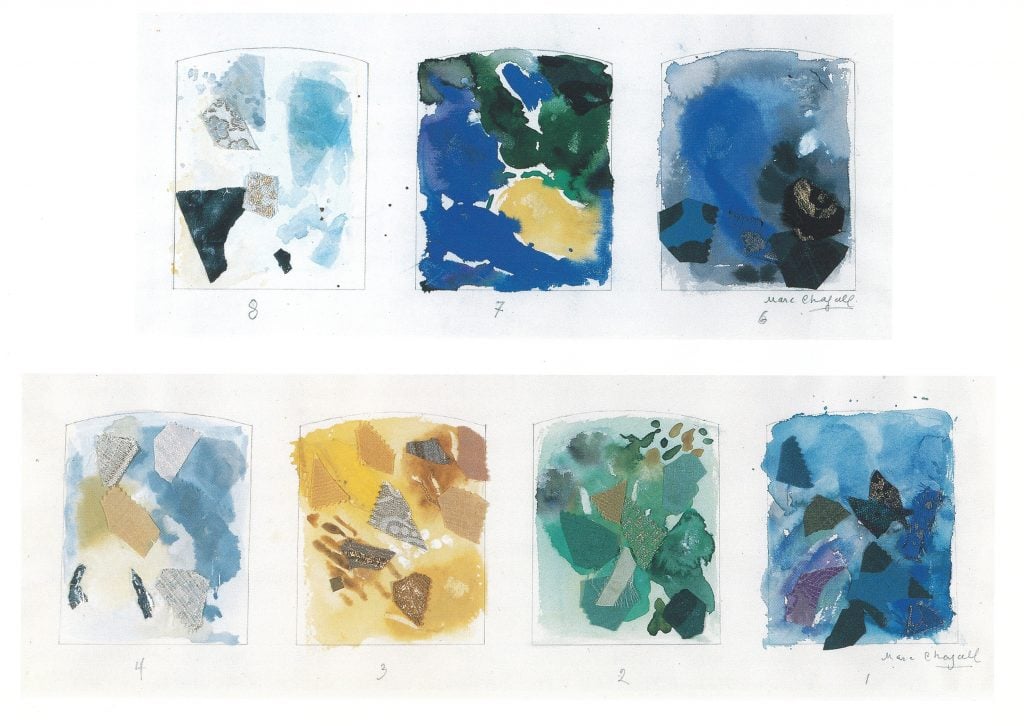
Marc Chagall sketches for Union Church windows (1965-66). Collection of Rockefeller Archive Center. Photo: © Mick Hale.
The show will also explore the eight other windows Chagall created for Union Church. He had proposed these other pieces, David Rockefeller remembered, to create a more “harmonious” environment (the congregants, however, required some persuading to allow yet more modern art into their place of worship). The windows he produced depict Hebrew prophets including Elijah, Joel, and Ezekiel in colors—blues, yellows, and greens—that were specifically chosen to echo those of Matisse’s rose window.
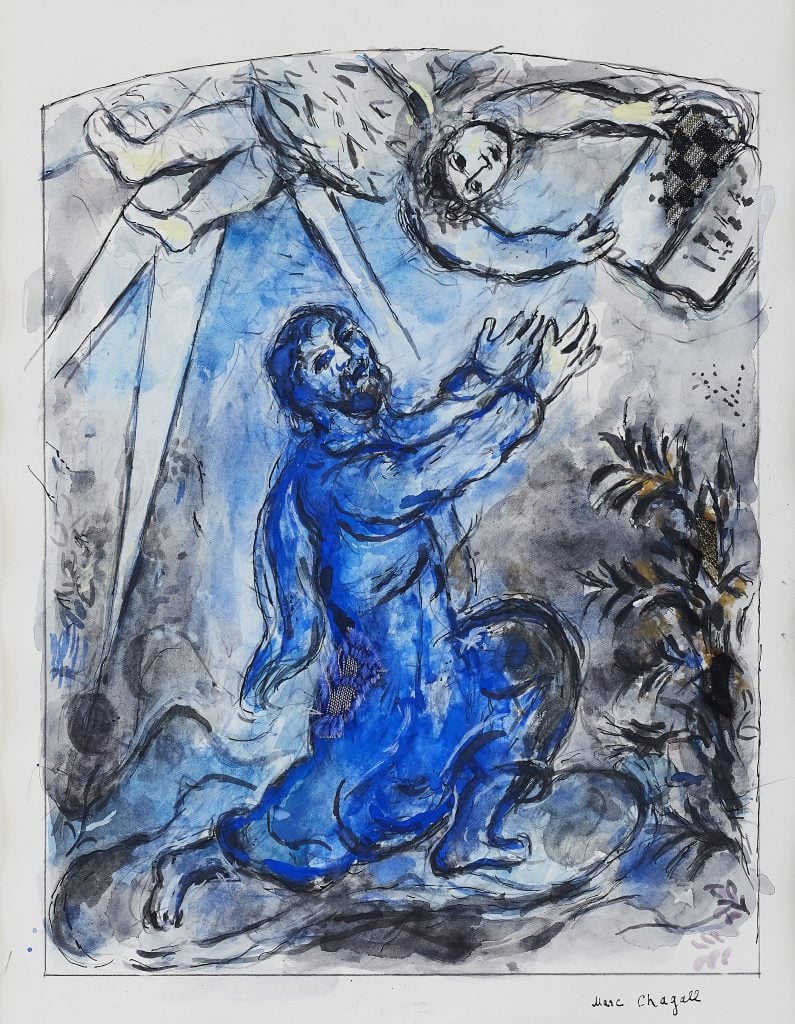
Marc Chagall, sketch for Ezekiel. Collection of the Rockefeller Archive Center. Photo: © Mick Hale.
Chagall’s drafts and colorwork for the church’s nine windows were snapped up by David Rockefeller for the Rockefeller Archive in 1975. They were exhibited only once, at MoMA in 1978—making “Sketching Light” the first time they will be presented together in decades, to mark the Rockefeller Archive Center’s 50th year. The Union Church is a brisk half-mile walk from the exhibition venue.
“Sketching Light” is on view at the David Rockefeller Creative Arts Center, 200 Lake Rd, Tarrytown, New York, October 11, 2024–May 17, 2025.





